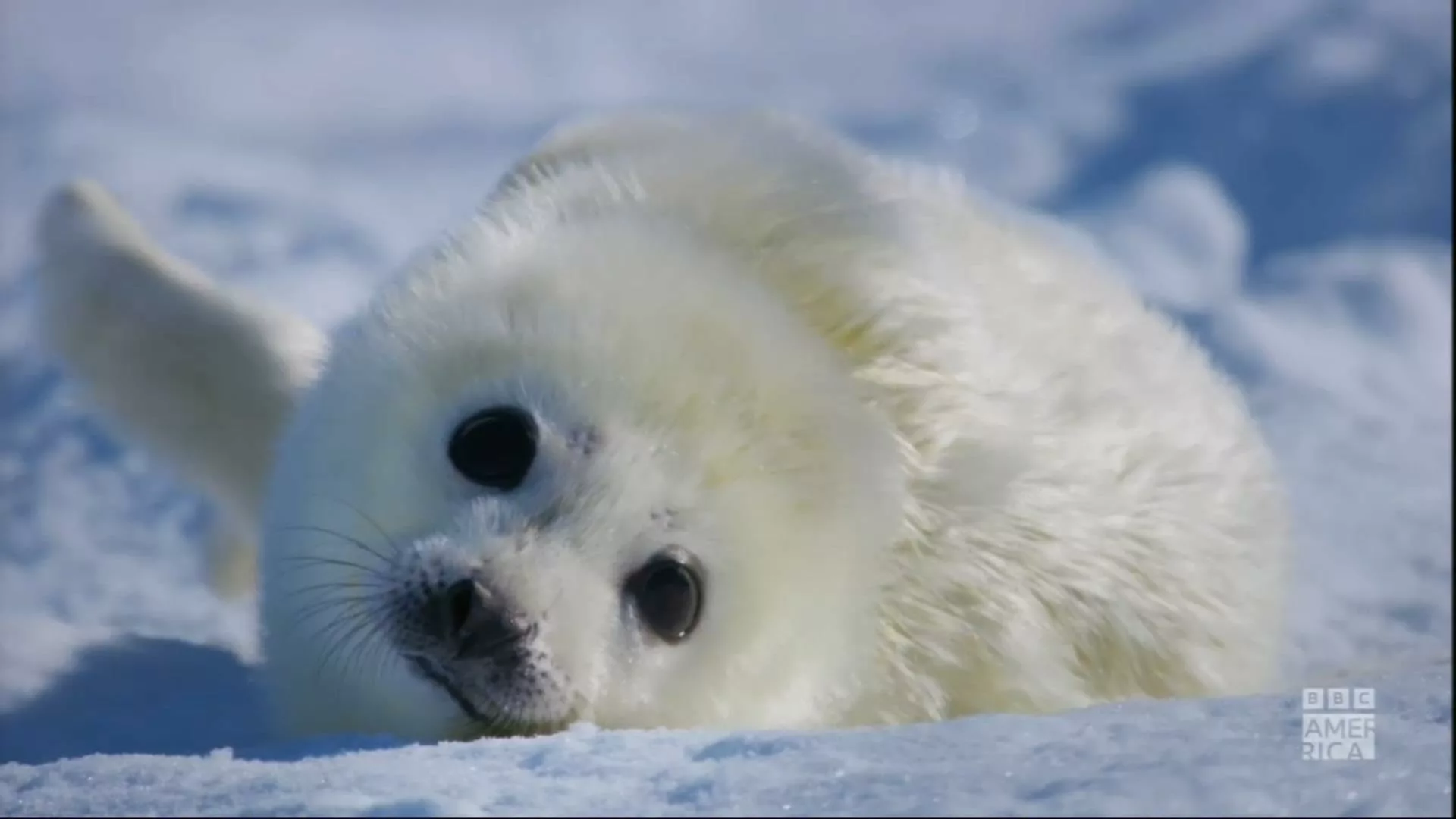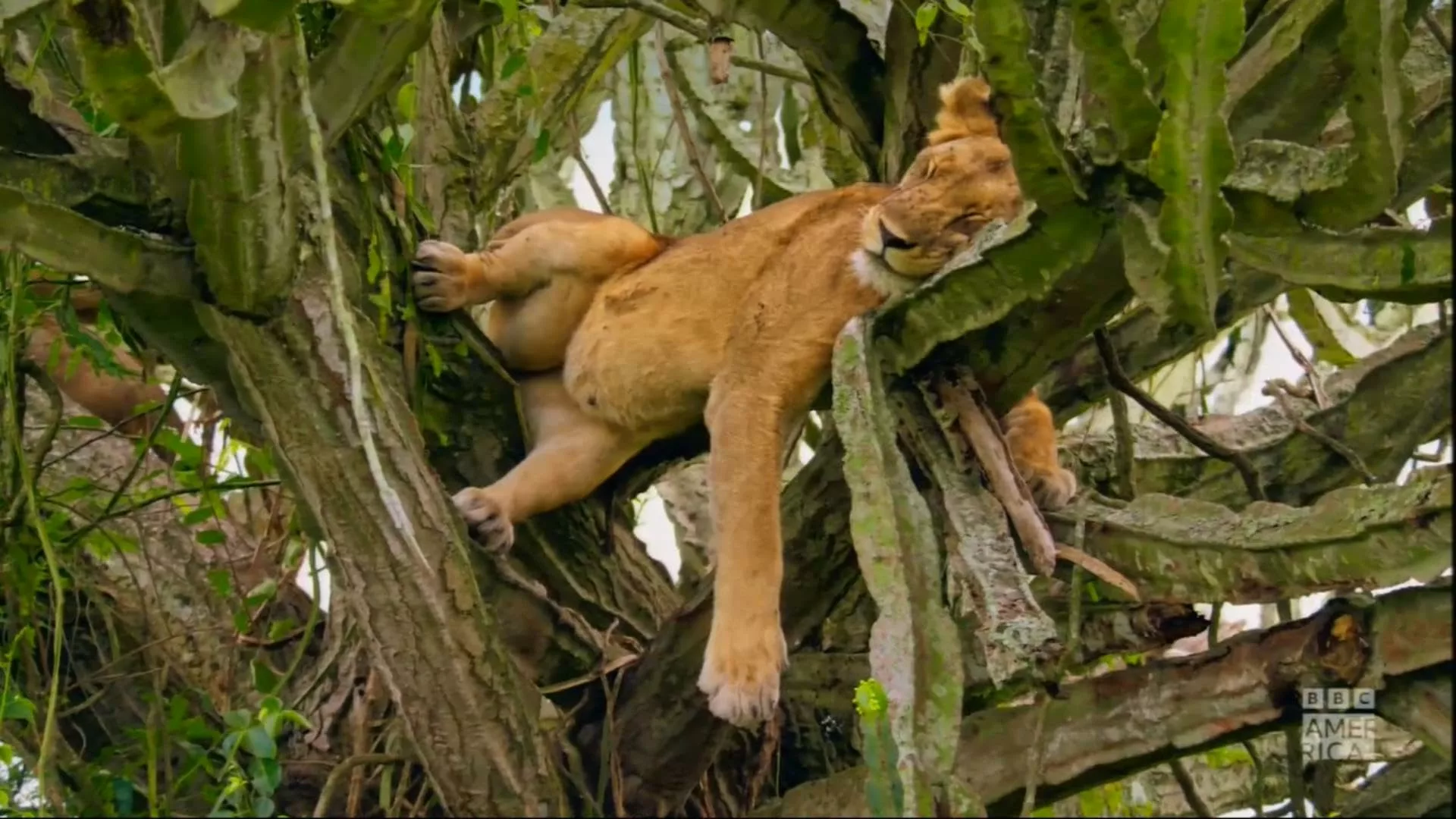The opening episode of the BBC’s nature documentary series Mammals takes us into the nighttime world inhabited by many furry creatures. Produced by the BBC Natural History Unit and narrated by the legendary David Attenborough, this installment is dedicated to the lives of mammals that prowl under the shroud of darkness. From the Etruscan shrew, Earth’s smallest mammal, to stealthy leopards and social hyenas, a kaleidoscope of nocturnal species are spotlighted hunting, feeding, and going about their daily routines under the veil of black skies.
Through groundbreaking camera techniques and night vision technology, we witness spectacles that have never been seen before. We hold our breath as a leopard stalks sleeping baboons high in an acacia tree in Zambia. An injured mother and baby cling desperately to a swaying branch, seemingly at the big cat’s mercy. Elsewhere, thermal cameras pick out the glowing forms of lonely impalas amid Tanzania’s infamous Ngorongoro Crater, surrounded by spots of eyes in the dark signaling approaching danger.
More remarkable still are the scenes capturing creatures long elusive to film crews, such as Saharan fennec foxes darting like ghosts through tall dunes under a star-flecked sky. So detailed is the footage that it’s hard to believe this wasn’t taken using bright lights. Tiny, charismatic mammals get their moment too, from an Etruscan shrew walking on tiptoes to a cutely animated, hairy armadillo in Argentina. Mammals remind us that even in our sleep, through the shadowy hours, life moves all around, sustained by nature’s mysteries.
Spectacular Scenes of the Night
This opening episode really shone a light on the wonders that emerge after dark. We see all sorts of incredible animals going about their business under the cover of night.
In Zambia, a leopard stealthily makes its way up a tree, eyes set on a group of sleeping baboons high above. The tension as it edges along branches is almost too much to watch! But the showstopping moment is when a mother baboon and baby become separated from the group—it feels like we’re right there, holding our breath as the leopard draws near.
Another truly haunting sequence follows in Tanzania’s Ngorongoro Crater. A lone buffalo stands its ground against a single hyena, but more and more spotted predators emerge from the gloom. Outnumbered by over 40 to 1, its fate is sadly sealed in agonizing fashion. The night vision truly accentuates the eeriness of seeing glowing hyena eyes encircle their prey.
Shifting to the sweeping Saharan dunes, we’re treated to amazing footage of little fennec foxes darting through the sand. Their oversized ears pick up sounds from miles around as they search for their next meal. And down in Argentina, a hairy armadillo provides some light comedy in its clumsy nighttime courtship.
But the real showstopper comes in Texas, as over a million Mexican free-tailed bats stream out from beneath a highway overpass at dusk. Seeing the phenomenon from the ground up close is just awe-inspiring. It leaves you with a newfound appreciation for the unseen activities that unfold after dark.
Masters of the Dark
Boy, those folks at BBC Natural History really know how to capture spellbinding footage! Whether scrambling up trees after leopards or trudging across starry deserts, their cameras catch it all with groundbreaking clarity.
A big part of that first episode’s appeal was thanks to some seriously impressive after-hours filmmaking. Scenes like the breathless leopard stalking baboons were intense enough, but when shot using high-tech night vision, they took on a truly ethereal quality. You really felt like you were right in the thick of the action.
Even more astonishing were the many sequences achieved without any artificial lighting whatsoever. How they managed to film Saharan fennec foxes dancing over dunes under a lone crescent moon, I’ll never know. Director Stuart Armstrong called filming them “challenging”—that’s’s one way to put it!
Another standout for me was watching hordes of bats twist and turn from that bridge at dusk, picked out by infrared cameras. Capturing over a million creatures emerging all at once, yet keeping each one sharply in focus, showed some sensational camerawork.
Even trickier must have been recording hyenas swarming that lone buffalo under the crater’s inky sky. Somehow, the night shots made the whole relentless ordeal even harder to watch. You have to take your hat off to the film crew for braving dangers unseen to bring such stories to our screens.
It’s innovations like these that keep raising the bar for nature documentaries. It makes me buzz with excitement to think where they’ll take the technology next!
Captivating Tales of the Wild
Boy, does Sir David know how to spin a yarn? The way he brings each creature’s world to life keeps you glued to the screen. It seems like I learn something new with every word from that wily old naturalist.
When recounting the leopard’s prowl, you really got a sense of the danger and drama as it played out. Yet Attenborough kept things exciting without getting too intense. The same goes for the hyenas’ attack—gruesome yet respectful.
What I appreciated most was how he wove little character portraits, even for minor roles. That shrew, scurrying along, had as much personality as the big hitters. And I have never heard “armadillo” said with such contagious glee!
The most stunning was how he transported us to far-flung landscapes. I was right there in the dunes, following those desert foxes, paw by paw. The crashing waves provided a perfect audio backdrop to the bats’ ballet too.
All told with just the right amount of intrigue plus a nice dash of humor. I even learned some new science, like that bats used claws for scratching! Most shows lecture, but his stories entertain and inspire alike.
On the eve of his 100th year, Sir David’s still got the magic. Mammals prove that nature programs can educate and enchant in equal measure when narrated by the undisputed master. I’ll be tuning in for whatever wildlife wonders he shares next, that’s for sure.
Capturing The Spectrum of Mammals
This series truly runs the range when it comes to variety! From tiny shrews and bats flitting under the moon to hulking buffalo, Attenborough introduces us to mammals of all shapes and sizes. What impresses me most is delving into the nooks and crannies these critters call home.
I mean, who would’ve guessed places as unlikely as sand dunes or city bridges served as havens for certain species? Goes to show Mother Nature’s stealth when finding spots for her creations. And we’re let in on secrets like how bats locate fish or foxes track supper across an open desert. Things I never would’ve considered without this show’s bright lights shining.
Yet amidst all the excitement, we also absorb some serious science. Realizing that most mammals turn nocturnal to avoid humans really puts our impact into focus. Then meeting oddities like armadillos or mole rats expands our notion of what’s out there. Clearly, months were spent shadowing animals so their habits could be shared.
By the journey’s end, I surely knew more about who co-inhabits our world and how they’ve adapted than ever before. While still feeling entertained throughout. There is never a dull moment, and there is always something new to ponder once credits roll. So if you’re after truly gaining knowledge alongside thrills, it’d be hard to top mammals in doing both so well.
Fresh Eyes in a Familiar World
Attenborough’s back catalog is epic in scope. Who can forget gazing inside Planet Earth’s diverse realms or the Blue Planet’s aquatic wonders? Yet with mammals, there’s a renewed sense of discovering Mother Nature’s secrets.
Somehow, Sir David’s wonder feels newly revived, like a kid seeing snowfall. It’s as if two decades more filming innovations allow for fresh angles on furry friends. Night vision lets bats and baboons play out while our eyes adjust too.
Plus, more critters mean varied stories. Before each scene transports, his fond locational whispers tease what’s next. Some moments rival past perfection too. Bats vacuuming fish skies? Chimp family moments too raw?
Of course, soulful scores and enthused tones remain hallmarks. But targeting one class amplifies mammal marvels. We study mobility, parenting, and survival like never before.
It’s a welcome reminder too that for all progress, mysteries endure. In a world overcome by humans, life finds poetic ways to persevere. So while format follows form, Mammals injects invigorated inquiry into a treasured genre. Attenborough, ever our window to wonder, remains cinema’s foremost natural historian.
Capturing Hearts and Habits
Mammals brought Sir David’s signature blend of breakthrough scenes and soulful storytelling. By targeting one class, it amplified nature’s ingenuity across habitats.
From nocturnal prowls to urban surprises, each episode unveiled new strategies for survival. Advanced cameras unlocked an entire hidden world. Yet the true stars were always the subjects, whether solitary foxes or social baboons climbing trees.
Attenborough’s infectious zeal, too, remains a constant delight. His hushed location cues alone transport viewers, while details enrich each discovery. It’s no wonder a man so steeped in natural history relishes sharing fresh finds.
At nearly a century old, his ability to revive that childlike sense of wonder feels ageless. For all the epic vistas now routine, Mammals reminded us that surprises still stir under moonlight. Mastery of techniques only sharpens focus on characters, complex or minute, that make ecosystems whole.
Through such crafted contributions, this legendary host expands our emotional ties to Earth’s quiet guardians. As human ways reshape wild spaces, his films pay tribute through art that nourishes our souls like nature nurtures theirs. For years to come, Mammals will rank among TV’s most treasured windows into lives far removed yet etched in our hearts, too, thanks to a narrator who shares their worlds and ours with such contagious and enduring passion.
The Review
Mammals
Sir David Attenborough and the BBC's Natural History Unit have once again delivered a groundbreaking landmark series focusing our attention on the incredible diversity of mammal species and their vital roles within ecosystems. Through innovative filming techniques and intimate storytelling, Mammals transports viewers to both familiar and unseen corners of the natural world, illuminating animal behaviors and adaptations with tremendous clarity and emotional resonance. As environmental pressures intensify, the documentary serves as an invaluable portrait of biodiversity and a thoughtful reminder of mankind's role within the community of life on Earth.
PROS
- Groundbreaking camera work and filming techniques showcase animals and behaviors never seen before on screen.
- Passionate and knowledgeable narration from David Attenborough that brings each species and story to life.
- Beautifully crafted stories that immerse viewers in the lives of individual animals and populations.
- Timely focus on the diversity of mammal species and the importance of biodiversity as human impacts intensify globally.
CONS
- Episodes could feel broad in scope at times by attempting to cover many different mammals.
- Some viewers may find certain sequences, like graphic predator/prey interactions, difficult to watch.
- The limited time allotted does not allow for depth in all mammal groups and biomes.





















































